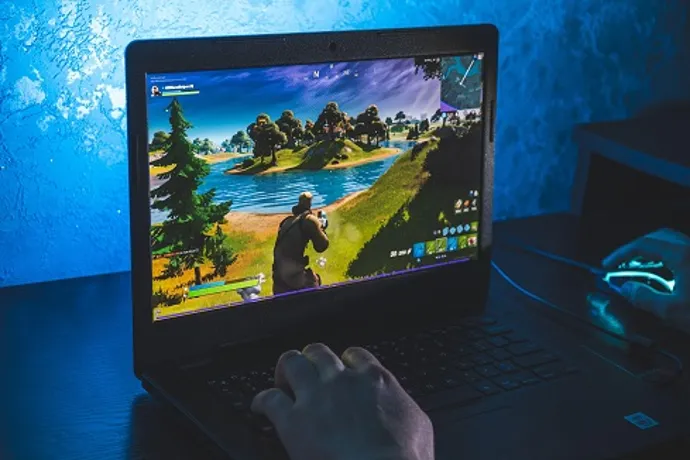4 Lessons Fortnite & World of Warcraft Can Teach Us About the Metaverse

These responses from our CEO, Jerod Venema, were originally included in InformationWeek.com's article, “What Fortnite and World of Warcraft Can Teach Us About the Metaverse.”
Gaming has long shown us the promise of the metaverse. Massively multiplayer online role-playing games (MMORPGs) like “World of Warcraft” and “EverQuest” created persistent online worlds more than a decade ago with digital goods and clothing worth real money. Today’s online games expand this financial power with real world brands designing and selling virtual items and experiences: Louis Vuitton designed skins and weapons for League of Legends, and Ferrari let players test-drive its 296 GTB in Fortnite. Hundreds of millions of gamers play online games for fun and socializing every day. Epic Games alone hopes to scale Fortnite’s 60 million monthly users to a billion.
Today’s gaming is not the final form of the metaverse but there are several lessons we can learn from gaming communities as we imagine and build an open and thriving metaverse.
Lesson 1: Gamers join digital spaces with a purpose in mind.
Online gamers play games for many reasons, but they all come down to one purpose: to have fun with other people. It doesn’t matter how great a game looks, how detailed the virtual world is, or the size of the company’s marketing budget -- if the game isn’t fun to play together, it won’t succeed.
Takeaway: Provide special purpose(s) for why your customers would spend time in your corner of the metaverse. What can they experience there that they can’t find anywhere else? Perhaps it’s a unique live event, a special competition, or educational opportunities that you alone offer access to.
Lesson 2: Gamers develop their own culture, slang, and style on top of existing game worlds.
Designers make games, but it’s the players who bring them to life. The most popular games give players the freedom to make their own culture and meaning, both inside and outside the game world.
Blizzard’s designers and developers deserve praise for the lasting popularity of their game “World of Warcraft.” They created a game world with all kinds of engaging experiences, quests, and environments. But much of what made this MMORPG a global phenomenon is the digital culture of the millions of subscribers who have played this (still active!) game since 2004. For example, the designers created a guild system that allowed like-minded players to team up on group missions called raids, but it was the players who made each guild unique in its personality and style. And without these guilds we would never have seen the legendary Leeroy Jenkins become a timeless symbol/meme of charging into a dangerous situation before you’re ready.
Takeaway: Digital culture grows from the bottom up. Build a versatile virtual world that empowers people to make their own community and meaning instead of setting strict guidelines for how to interact or play.
Lesson 3: Games operate inside a relatively closed world but the metaverse should be more open.
For all their popularity across the planet, online games still run inside their own digital spaces and don’t offer universal access. Even free-to-play games like “League of Legends” require fast computers and speedy internet connections. What’s more, today’s gaming worlds don’t cross-pollinate with content, as you won’t find weapons from “Elder Scrolls Online” inside “World of Warcraft.” But remember: Gamers rarely play only one online game. This means there is a cross-game virtual culture that shares players, design trends and memes.
Since today’s online games are built expressly for group entertainment inside a relatively closed environment, they create digital silos that lack the openness and cross-platform presence of the ideal metaverse. A thriving metaverse will have interoperability and cross-platform data sharing to enable a truly open experience.
Takeaway: Look for ways to broaden your metaverse experience that do not rely only on technology and digital assets. How can your digital culture and story cross the boundaries of virtual worlds?
Lesson 4: Today's games require too much onboarding and startup effort.
There’s no question today’s online games can help us better envision the possibilities of the metaverse. But we should view these games as metaverse prototypes, not the final product. Today’s online games require too much onboarding and startup effort to appeal to a truly universal user base. Just learning a new game’s systems, strategies and environments can take days or even months.
To move beyond these prototypes and build a better metaverse for everyone, we need to offer a progressive immersion experience. This would start by making the onboarding process for joining new virtual worlds as simple as opening a web browser.
Once users are comfortably inside the metaverse, there should be easy steps to progressively get more engaged. Think about how mobile websites provide a simple way to interact with a business that can get more involved on the desktop site and then lead to the user downloading that business’s app. In the same way, the metaverse experience can begin on a web browser and eventually lead to VR headsets and deep immersion.
Takeaway: A better metaverse will be built through progressive experience. Think about how to lower barriers to entry.
Today’s gaming worlds show how the metaverse is not some abstract marketing concept or the pipe dream of a tech billionaire. Instead, the metaverse and its interconnected virtual worlds are a real entity that most people will one day join -- brands and businesses need to prepare.
